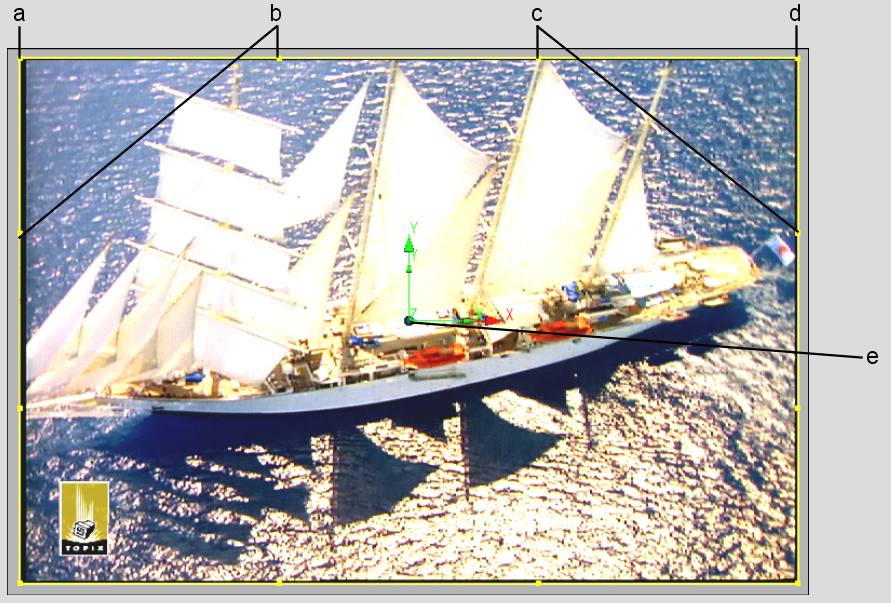Use an extended bicubic surface to warp specific areas of a surface. An extended bicubic surface can be subdivided into many sections, which are controlled by vertices. The vertices allow you to bend and contort the surface. The vertices are joined using bicubic interpolation—curved lines.
You can animate the shape of a bicubic surface by changing the position of the vertices and moving the vertex tangent handles. See Reshaping Using the Channel Editor.
By default, the extended bicubic surface has four vertices and eight tangents. You can translate, scale, or rotate these points and tangents individually or as a group. Subdividing the bicubic surface increases the number of vertices in the image and allows for more precision.



(a) vertex 1 (b) tangents of vertex 1 (c) tangents of vertex 2 (d) vertex 2 (e) Reference point
Image courtesy of Topix
Extended bicubics have three types of points: vertices, tangents, and the reference point. Vertices and tangents are collectively called surface points.
Vertices lie on the surface and its tangents determine the curvature of the deformation at each vertex. The reference point indicates the axis of origin for applying rotation and scaling to surface points.
Use the surface points to control the deformation of the surface. Each vertex has tangent handles. By moving the tangents and their handles, you can warp specific areas of the surface. You can translate, scale, or rotate these points and tangents individually or as a group.
Tangent handles have three modes.
| This mode: | Indicates: |
|---|---|
| The handles are not broken. If you move this handle, the adjacent handle will move in the opposite direction and by the same magnitude (length). | |
| The handles are broken. If you move this handle, no other handles are affected. | |
| The handles are geometrically continuous. If you move this tangent, the adjacent handles will move in the opposite directions but maintain its magnitude (length). |